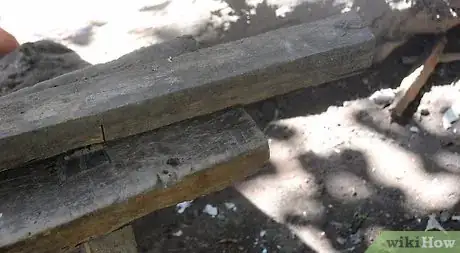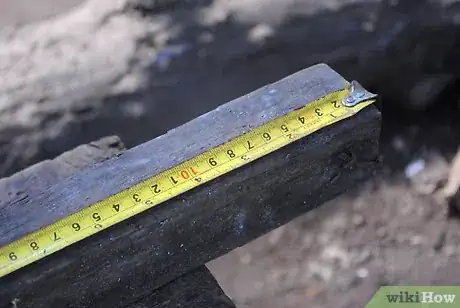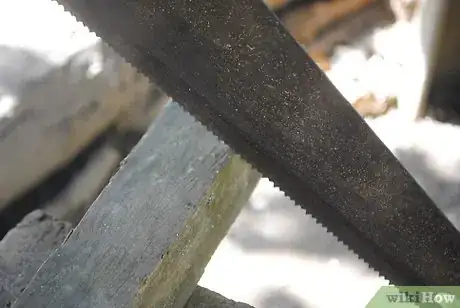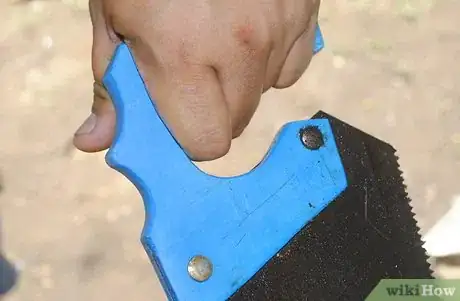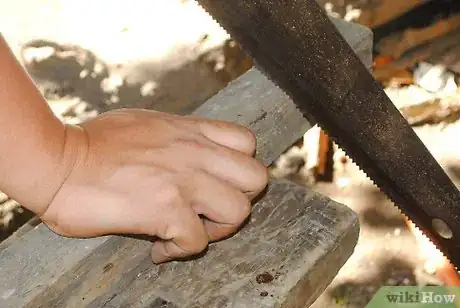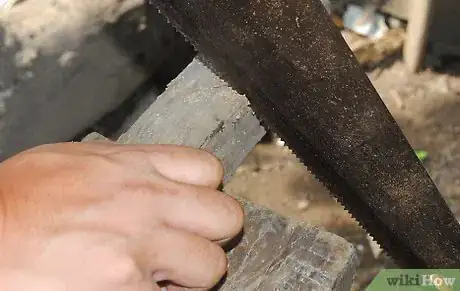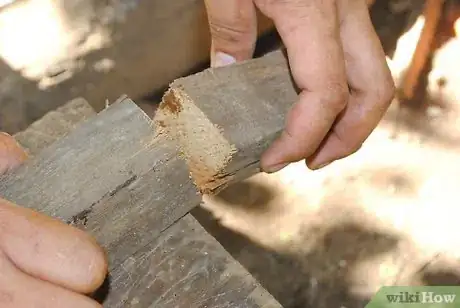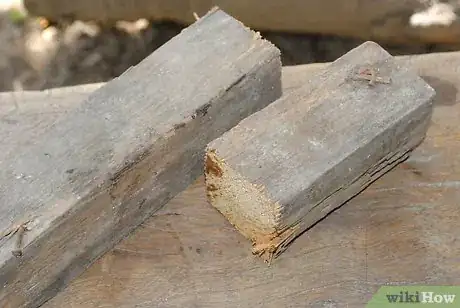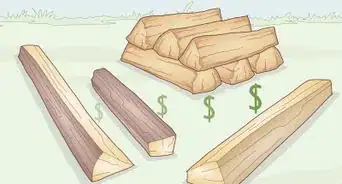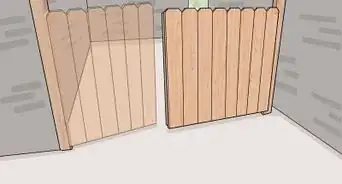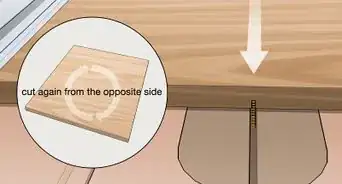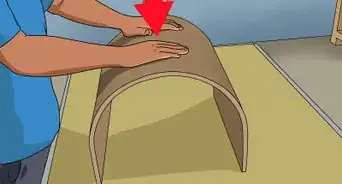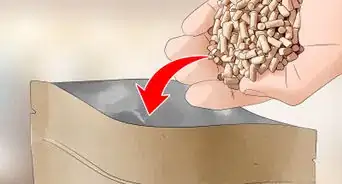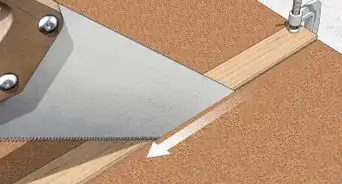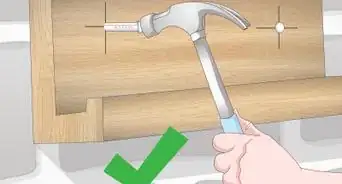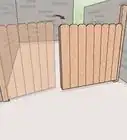wikiHow is a “wiki,” similar to Wikipedia, which means that many of our articles are co-written by multiple authors. To create this article, 11 people, some anonymous, worked to edit and improve it over time.
This article has been viewed 60,067 times.
Learn more...
Anyone who intends to take on a home improvement, woodworking or construction project will need to saw wood in order to obtain the right size of wood. Handsaws are best used to cut precise shapes and pieces of wood. Circular saws are powered by electricity. While those are usually used to cut large, even pieces of wood, they move quickly and can be dangerous if the user is not skilled and experienced in power tools. Perfecting the technique of using a saw takes a lot of practice but having a basic skill like this useful in areas from DIY projects to construction. Using a handsaw can give you control over the cutting process and with practice, the end result will be exactly the right shape and size.
Steps
-
1Secure the wood to a workbench or a sawhorse. Leave plenty of space to work around the wood. Woodworking clamps can be purchased at hardware stores. Attach the clamps to the wood and the surface that the wood is resting on before beginning.
-
2Mark the line to be cut. Use a tape measure to determine the size of the wood, and where it needs to be cut. With a pencil and a square, draw a line across the wood, indicating how and where you will cut the wood.
- If you are a beginner, continue the line all around the workpiece so that you have a better guide and an idea of how straight your cut is.
Advertisement -
3Place the handsaw on top of the wood, slightly away from where the cut line was drawn. The saw doesn't cut along a one dimensional line, it cuts a path of about 1 to 2 millimeters. It is necessary to take this into account or the end result will be a few millimeters too short or too long. Angle the far edge of the handsaw down towards the ground, and slightly raise the elbow that is holding the saw.
-
4
-
5Hold the wood in place with other hand. The hand that is not holding the saw should rest on the piece of wood in order to keep it still and secure. Be sure to keep that hand a good distance from the saw to prevent an accident.
-
6Start the cut by applying no pressure onto the saw and pull back. Use another piece of wood to keep the saw from moving away from the line if necessary. Once the saw has made a slight cut into the wood, check that you're cutting in the right direction and at the right angle.
-
7Start applying pressure. Lightly press down on the saw and keep cutting through the wood. Try applying less or more pressure onto the saw to find the right balance of force. Your sawing motion should be smooth and accurate. Slowly move the saw back and forth, towards the body and away from it. Stop after every few motions to level the saw on the cutline, and make sure that the cut is straight.
-
8Continue the sawing motion until the piece of wood is ready to break off. Slow down and apply less force towards the end, to avoid cracking or splintering the wood. Hold on to the piece that you're about to cut off to prevent the weight of the wood from breaking off in splinters.
-
9Finished.
Community Q&A
-
QuestionHow do you keep the blade from hanging up in the wood?
 Community AnswerStop using so much muscle. Let the saw do the work while you power it back and forth, not down!
Community AnswerStop using so much muscle. Let the saw do the work while you power it back and forth, not down!
Warnings
- Wear goggles while sawing wood to prevent dust and chips entering the eyes.⧼thumbs_response⧽
- Remember to keep fingers, hands, legs and other body parts and people away from the sharp teeth of the saw.⧼thumbs_response⧽
Things You'll Need
- Wood
- Handsaw
- Pencil
- Square
- Tape measure
- Workbench or sawhorse
- Clamps
- Goggles
